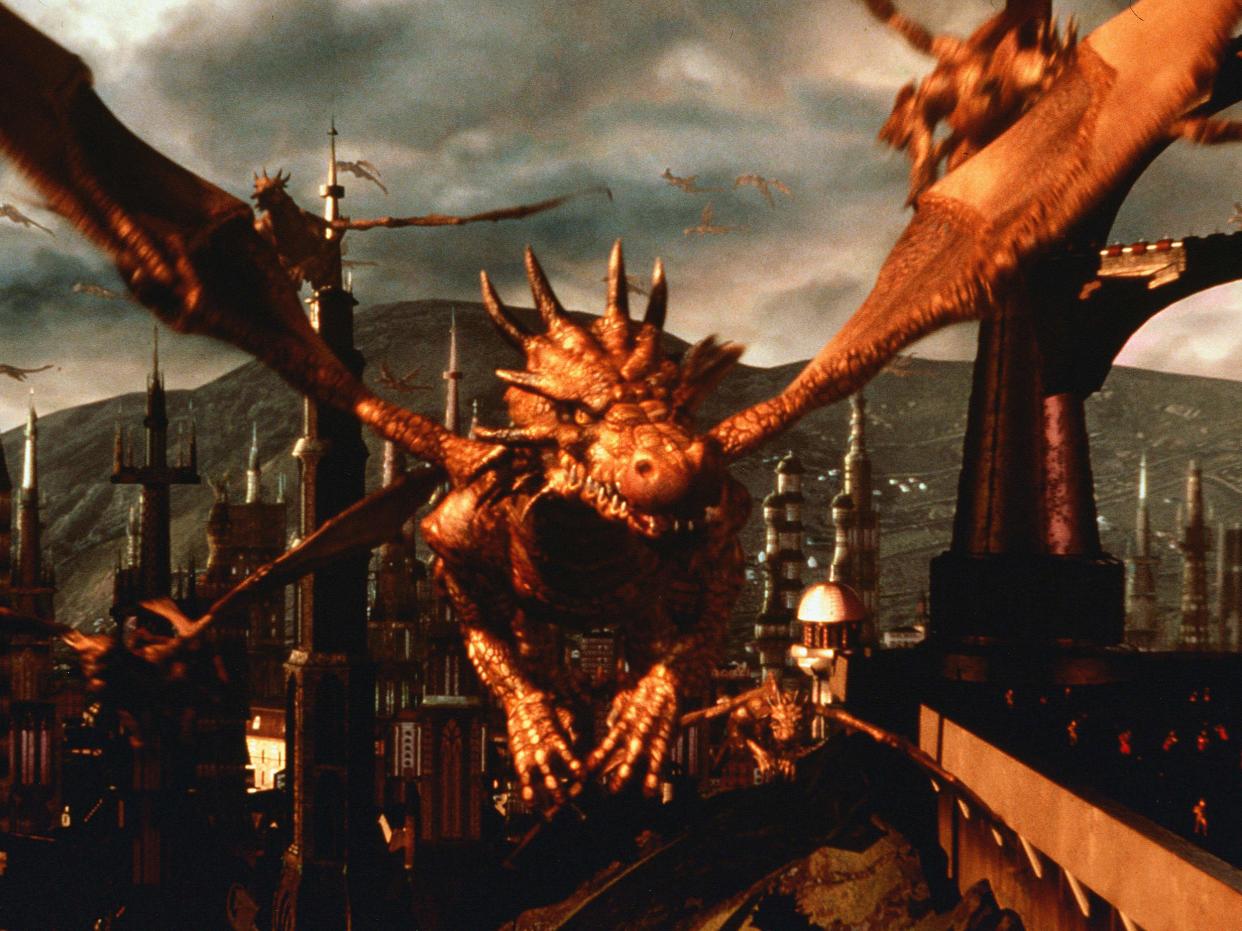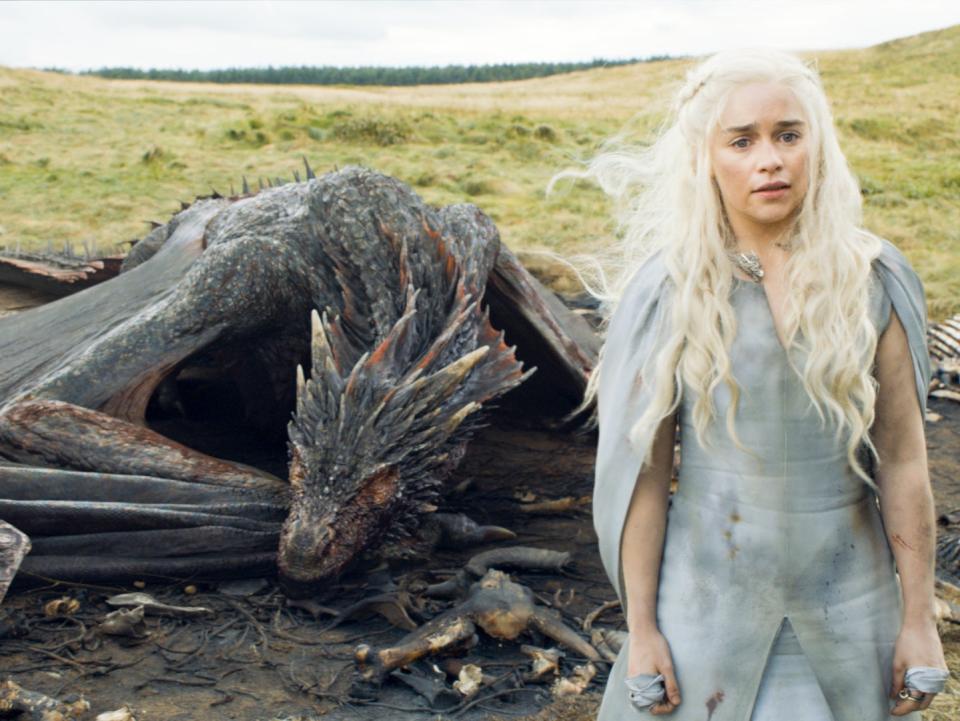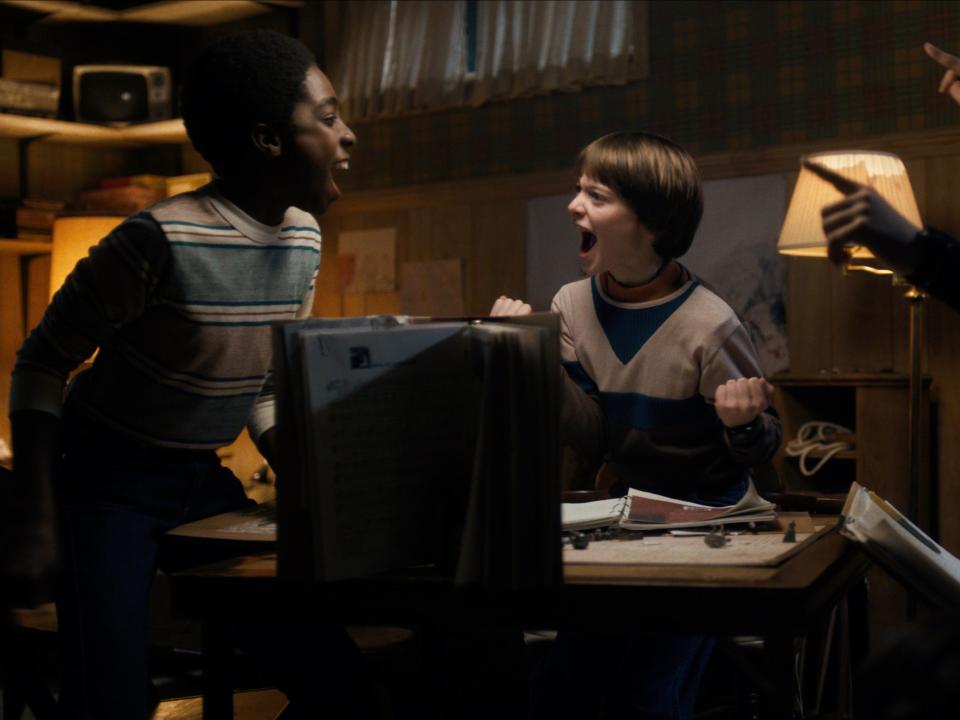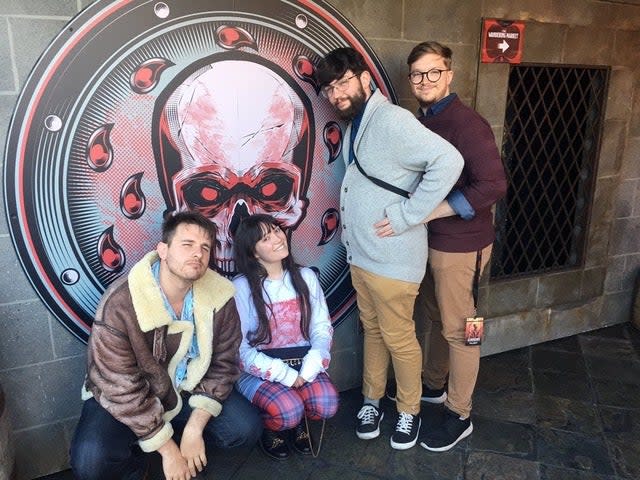You gotta roll with it: How livestreaming made Dungeons and Dragons cool

Launching a new movie franchise is always a roll of the dice but executives at Paramount Pictures will feel they are on to a sure thing as they forge ahead with plans for a jj cinematic universe. Cameras are set to roll shortly on a big-screen adaptation of the iconic role-playing game involving pen, paper and dice (lots of dice). Filming will be at Belfast’s Titanic Studios, with Chris Pine set to star and Game Night’s John Francis Daley and Jonathan Goldstein directing.
Titanic Studios already occupy a cherished place in the hearts of fantasy fans, as the home of Game of Thrones for nine seasons. That journey ultimately ended in disappointment with one of the sorriest series finales in recent television history. Could D&D prove there is life for the genre beyond Jon Snow and the Night King?
If so, it would be a remarkable turnaround. Just a few years ago, Hollywood would have run screaming from Dungeons and Dragons. It has been scarred once already. A 2000 D&D movie starring Jeremy Irons as “Mage Profion” and former Doctor Who Tom Baker as “Halvarth the Elf” crashed and burned faster than Smaug plunging into Lake-town at the end of The Hobbit. Twenty years on, however, the game’s image has been transformed.
Watch: Paramount Pictures developing 'Spamalot' movie
Dungeons and Dragons has become cool. Or, at least, cool-adjacent. The game was beamed into living rooms around the world thanks to Stranger Things. Game of Thrones has, meanwhile, given fantasy in general a veneer of tastemaker approval. But the real driver may be the hugely popular genre of real-time D&D “sessions” livestreamed on the Twitch streaming service (typically also available as podcasts). The most popular, Critical Role, has 44,000 paid subscribers to its Twitch channel (each stumping up £3.60 per month for bonus content) and has racked up 220 million Twitch views. People are nerding out watching nerds… nerding out.
This has translated into blockbuster sales for the game itself. When a new edition of the Player’s Handbook rules manual was released, it shot to the top of Amazon’s bestseller charts. Sales of D&D products jumped 44 per cent in the following 12 months. According to the makers of the game, Hasbro (which is co-producing the new film with Paramount), some 12 to 15 million people play Dungeons and Dragons in North America alone.

Critical Role, which returns to Twitch this week after a winter hiatus, is also in the process of spawning its own cartoon series, The Legend of Vox Machina, about a group of heroes battling ancient evil on the Westeros-esque continent of Tal’Dorei. The project raised $11m (£8m) on crowd-funding platform Kickstarter and is now coming to Amazon Prime in conjunction with Titmouse, the studio behind Netflix hit Big Mouth.
Is D&D more in the mainstream consciousness? Yes, says Greg Leatherman of the Very Random Encounters D&D podcast, which places an emphasis on representing gamers from the LGBT+ community. “Are people more willing to just enjoy the things they like? Yes. I still think people see ‘nerd’ stuff as frivolous and I don't think that will ever change. But I think people are more willing to find others who enjoy RPGs and express their like of that on the internet. It's still an unfortunate part of society that people will mock people for the things they like and I wish that would end, but more awareness of D&D has let people see how fun the game can be and put the seed of them wanting to have fun too. That is cool.”
This might be a good moment to cast a “freeze” spell and delve into the basics of Dungeons and Dragons. Created in the early 1970s by two war-gaming fanatics from Wisconsin, the game involves three or more players sitting around a table (or coming together virtually nowadays) and sharing in a fantastical adventure.
There is no “board” in the traditional sense. Instead, a referee – the “Dungeon Master” – describes the action to the players. They, in turn, tell the DM what their characters – typically wizards or warriors – would like to do. And then everyone rolls dice and starts speaking over one another. This will typically continue for three hours or more.
But you probably already know that because you’ve seen Stranger Things, in which the nerdy kids play D&D in the basement. The 1980s-set Netflix series has been credited with contributing to the game’s rising popularity. D&D publisher Wizard of the Coast (a subsidiary of Hasbro) even cashed in with a special Stranger Things-themed D&D starter set (featuring the Demogorgon from the show).

Stranger Things is certainly a factor, then. However, many in the hobby believe livestreams and podcasts such as Critical Role have done as much, if not more, to raise the game’s hipster quotient.
“The popularity of livestreams, and the advent of hosting websites like Twitch and YouTube, has given the hobby a major boost in that respect, because, almost for the first time since the game's inception, people are able to record themselves playing,” says Duncan Rhodes, who runs a blog about the hobby called Hipsters and Dragons.
“They can actually show the world what Dungeons and Dragons – and other roleplaying games – are all about. And it turns out a lot more people actually like Dungeons and Dragons than we thought, now that they understand what it is.
“Critical Role is a fantastic advertisement for D&D and roleplaying in general," he says. “It really showcases the game’s best aspects, with storytelling at its heart. Matt Mercer [the DM on Critical Role] is the Lionel Messi of Dungeon Masters, so it's great to watch him weave together the narrative.”
D&D references in Stranger Things and sitcoms such as The Big Bang Theory have undoubtedly raised awareness of the game, says Mark Hulmes, dungeon master on the UK-based HighRollers D&D web series and podcast (which has nearly 90,000 YouTube subscribers). However, he’s not sure if this sort of exposure is actively recruiting new players. “They [TV shows] often still rely on the old tropes of ‘nerds play D&D in a basement’,” he says. “I think shows like Critical Role [and] HighRollers…do way, WAY, more for the hobby.”
Critical Role was an accidental success, in many ways. It began as a real life, off-screen D&D campaign played by a group of cartoon and video game voiceover artists in Los Angeles (to be technical, they initially played Pathfinder, a sort of cousin-once removed of D&D). Mercer, the celebrated DM, was a voice actor whose credits include Sailor Moon and Attack on Titan. Among his players were actors who had appeared in The Help, The Killing and the Legend of Korra.

In 2015, they agreed to stream their sessions on Geek and Sundry, a YouTube channel that has tapped into the growing mainstreaming of nerd culture. The experiment was an immediate success: episode one has now been watched 15 million times. Critical Role later moved to Twitch, the live-gaming platform owned by Amazon, where play sessions were broadcast live (they switched to Zoom when the pandemic struck).
Dungeon Master Mercer and his players are showbusiness types and obviously more extrovert – and perhaps better groomed – than the average tabletop gamers. But what they are playing is still recognisably D&D – and with gaming sessions often going on for three or more hours, their passion for the hobby is obvious.
That’s equally true of Hulmes and HighRollers. In a recent episode, Hulmes’ players spent most of their time trying to flog magical items in order to top up their savings. It isn’t exactly Gandalf v the Balrog in The Lord of the Rings. But that kind of nitty gritty house-keeping is part of every good Dungeons and Dragons campaign, and long-time players will find it fascinating to witness it spun into mass entertainment.
“For a long time, especially when I was learning to play, there was no way to actually see, or hear, what a game of D&D was actually like," says Hulmes. “You only had the media representations and stereotypes to go by, which were hardly flattering.”
But Critical Role, HighRollers and the like have changed the rules. The barrier of a thick, incomprehensible D&D rulebook, full of confusing tables and pictures of dwarves swinging axes, is removed. The “die-curious” can instead experience the essence of role-playing: people coming together and sharing in exciting adventures.
Watch: 'Wonka' prequel set for 2023 release
“We like stories,” says Joel Zammit of the D&D Is For Nerds podcast. “We always want to know what happens next and RPG podcasts can lend themselves to that very easily. It’s a lot different than a scripted show as no one else knows the choices anyone else is going to make. And when you add in dice rolls, you add that beautiful piece of chaos that every story needs. It’s storytelling by committee and can oftentimes lead to unexpected and surprising outcomes.”
During Covid, the appeal of these streams and podcasts has been further enhanced. Tabletop gaming is about coming together. But now we’re all stuck at home. Critical Role and HighRollers offer an escape hatch from a world that seems to grow smaller than the day.
“We’ve seen an increase in viewers and podcast downloads where people have more time. Investing 90 minutes or three hours a week is a big-time commitment for some, but now with more folks at home, a lot have been catching up or tuning in for the first time,” says Hulmes. “Plus, I think there is something very comforting about listening and watching a bunch of friends get together – via video, nice and safely – and have a laugh with each other and tell a cool story together.”
Critical Role’s new season can be accessed at criticalrole.com
Read More

